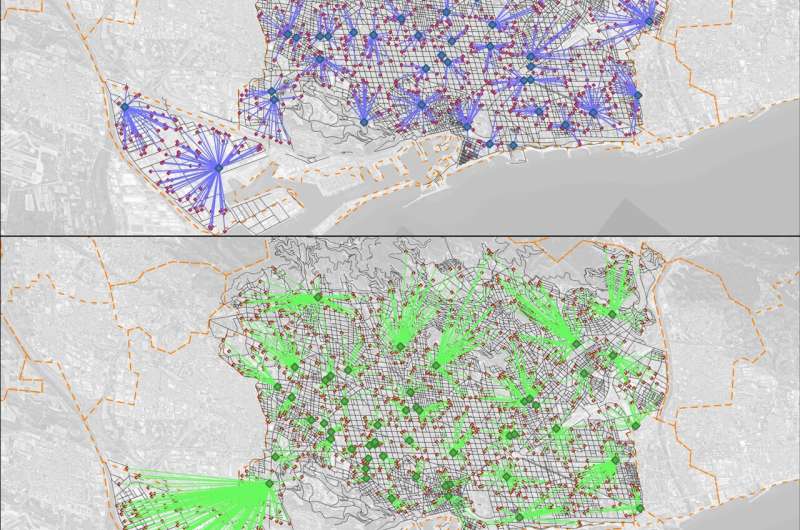
October 16, 2024 by Open University of Catalonia
Collected at: https://techxplore.com/news/2024-10-publicprivate-network-urban-goods.html
Estimates suggest that 4 million parcels are delivered every day in Spain, most of which are destined for the metropolitan areas of large cities, which is where 55% of the country’s population lives.
Parcel delivery rates skyrocketed during the COVID-19 pandemic, in particular, as a result of the increase in online shopping, which has continued to grow by double-digit rates even since the end of the pandemic. This new mobility has aggravated the problems of traffic congestion, lack of parking and poor air quality that have been issues in urban areas for years.
As part of the EU’s commitment to finding innovative solutions to reduce the negative impacts of urban freight transport, promoting intermodal transport, reducing traffic and optimizing deliveries, a group of researchers have devised a proposal for an urban goods distribution network.
“We have been studying possible solutions for years, and in addition to determining that there is no single option, we have found that much closer collaboration between the public sector and the private world is necessary,” explained Cristian Castillo Gutiérrez, a member of the Faculty of Economics and Business at the Universitat Oberta de Catalunya (UOC) and a researcher in the Sustainability, Management and Transport (SUMAT) research group.
The proposed design of the network, which has been published in the European Transport Research Review, focuses on the city of Barcelona, where the researchers identified 1,057 locations for parcel delivery points. The proposal is for micro-hubs located in existing public transport stations, markets, shopping centers, post offices, car parks, buildings and collection points.
“Some public car parks have already given over spaces to private parcel companies, and we would need to see what investment the other points proposed require so that they can be created,” said Castillo.
A routing algorithm
The authors not only identified these thousand potential intermodal micro-hubs for more efficient delivery of parcels in Barcelona, but they also developed an agile routing algorithm to optimize the work of delivery drivers. Equally importantly, they also advocated deliveries with cargo bikes and electric vans in order to contribute to improving the city’s air quality and reducing greenhouse gas emissions.
The algorithm they developed generates adaptive distribution plans which take into account micro-hub operating costs and vehicle routing costs, and uses heuristic and machine learning methods enhanced by parallelization techniques. It uses artificial intelligence to quickly produce high-quality routing plans based on transport infrastructure and modes of transport and delivery points.
The algorithm adapts dynamically, and uses multi-objective techniques so that each routing plan attains what is known as Pareto efficiency, which means that it produces plans in which it is impossible for any gain to be made in a variable without a loss elsewhere.
“The research teams involved have been developing intelligent algorithms for years that help us make optimal decisions, thereby improving the transportation and logistics services of the companies we collaborate with. In this case, these algorithms have enabled us to create new service models for citizens in urban areas, which can be of great use to public administrations,” notes UPV researcher Ángel A. Juan.
According to Cristian Castillo, the real-world testing carried out in Barcelona has shown “promising results,” as it provided potential scenarios for reducing greenhouse gas emissions and improving delivery times, and satisfying parcel companies, workers in the sector and the final recipients of the parcels.
Smart routes for rural areas
In a previous study, Professors Castillo and Álvarez used routing algorithms to increase the efficiency of health care professionals’ journeys in areas located more than 45 minutes from a primary medical care center on foot or by bicycle.
The algorithms created, which are scalable and customizable, design the most efficient routes according to parameters including priorities, visit times and distance of travel. The authors carried out a simulation in Segovia, a province where 11.8% of municipalities are located more than a 45-minute walk from a primary care center, in order to put them to the test.
More information: C. Castillo et al, Towards greener city logistics: an application of agile routing algorithms to optimize the distribution of micro-hubs in Barcelona, European Transport Research Review (2024). DOI: 10.1186/s12544-024-00669-7

Leave a Reply